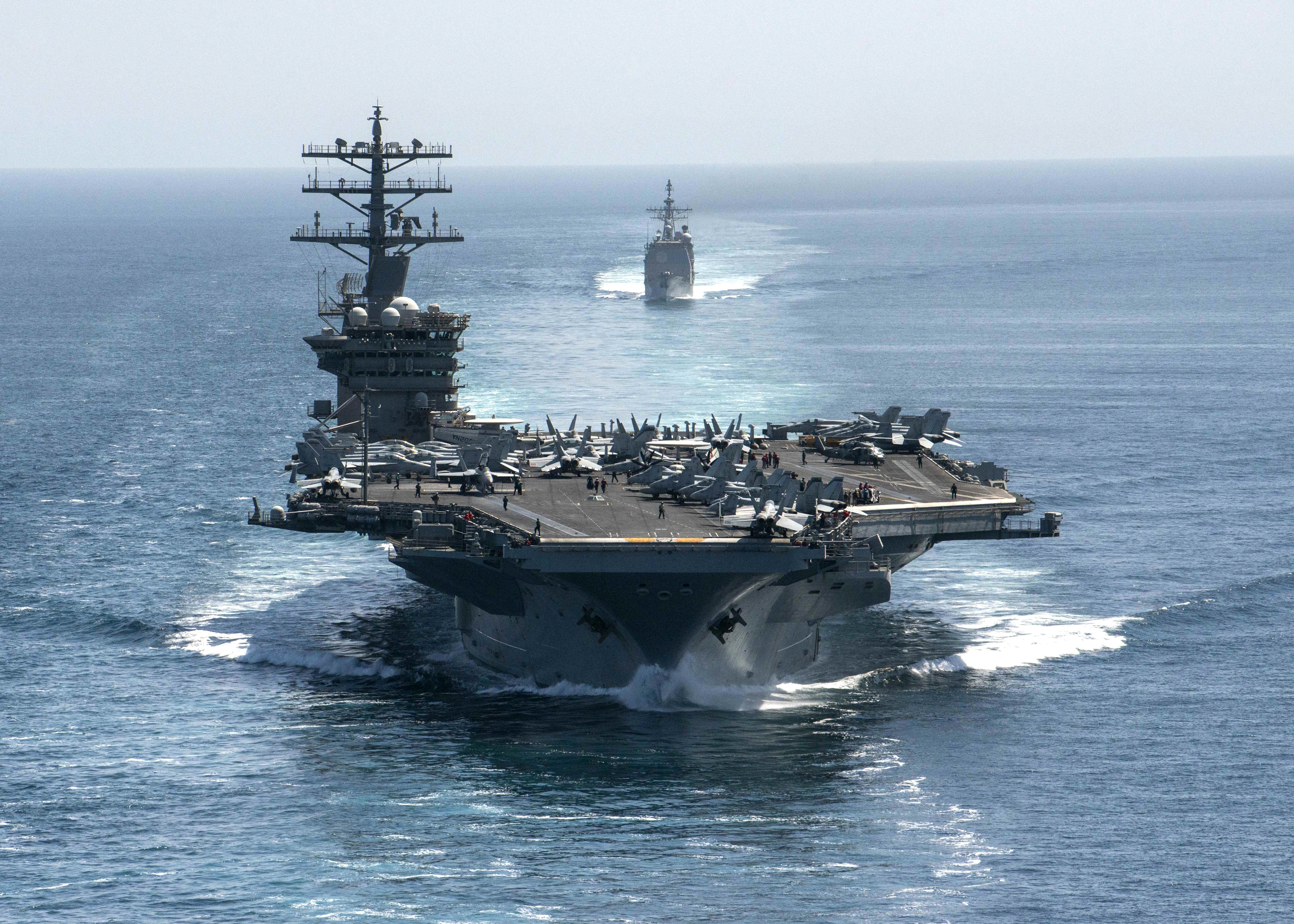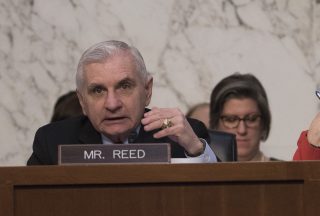
Rather than focusing on the “arbitrary” 355-ship fleet total, the service should concentrate more effort on developing autonomous vehicles, the top lawmaker on the Senate Armed Services Committee said today.
Speaking at the Ronald Reagan Institute, SASC Chairman Sen. Jack Reed (D-R.I.) emphasized the importance of capability over quantity.
“In many cases it’s arbitrary. It sends a signal that we’re going to have … so many aircraft or ships rather than look at the threat. Look at what capabilities you need,” Reed said when asked for his thoughts on calls for a 355-ship Navy and larger fleet.
“One of the things – and I think [former Defense] Secretary [Mark] Esper tried to emphasize this when he talked about his number – was we have to move more toward autonomous vehicles and particularly surface vehicles and sub-surface vehicles.”
Reed’s remarks echo previous comments from his counterpart in the lower chamber. House Armed Services Committee Chairman Rep. Adam Smith (D-Wash.) has long criticized the objective of a 355-ship Navy and argued that the service and the Pentagon need the right capabilities, not necessarily a specific quantity of platforms.

While the Navy had for years said it was building toward a fleet of 355 ships, a shipbuilding proposal unveiled at the end of the Trump administration called for a significant boost to the shipbuilding account that would bring the fleet to 546 ships – including battle force ships and unmanned surface and sub-surface vehicles – by 2045. But it’s unclear how the Biden administration plans to approach shipbuilding, as the Fiscal Year 2022 budget has yet to be released.
Reed argued that pursuing autonomous vehicles for the fleet could help both with cost savings and in deterring adversaries.
“Don’t send a manned vessel where you can send an autonomous vehicle. And I think that would actually be able to be cheaper in many respects and also be more destabilizing to our opponents,” he said.
The SASC chairman also stressed the importance of communications, noting that he believes an adversary in a future conflict would try to take down communications early on in the fight.
“One of the big platforms we need is not necessarily a fighter aircraft or a carrier or a new troop carrier, [what] we need is the complete uninterruptable connectivity,” he said. “That involves space. It involves technologies. It involves adapting.”
While the Pentagon continues to shift its strategy toward a focus on the Indo-Pacific region, much of the conversation has centered around how the Defense Department should counter China in the region.
Adm. Phil Davidson, who recently left his post as the head of U.S. Indo-Pacific Command, told Congress earlier this year that he believes China could try to take control of Taiwan by the end of the decade.
“I think our concerns are manifest here during this decade, not only on the development – the numbers of you know, ships, aircraft, rockets, etc. that they’ve put in the field – but the way they’re advancing those capabilities as well in combination with everything that you just cited: Hong Kong . . . and Tibet, and a line of actual control in the South China Sea and the East China Sea,” Davidson told the SASC in March.
Asked if the U.S. is prepared to stop a conflict over Taiwan, Reed pointed to China’s clampdown on protesters in Hong Kong.
“Well I think we are very conscious – as Admiral Davidson expressed – of the changing dynamic and it’s been changing over the last decade or more, with respect to Taiwan,” Reed said. “One of the wakeup calls was what happened in Hong Kong, which we assumed, I assumed at least, would be eventually included more decisively within the People’s Republic [of China], but was done so very dramatically.”
Reed said his conversations with military officials in the Indo-Pacific show him they are adjusting to the new strategy. For example, commanders are seeking different equipment for the Pacific compared to what they sought for ground wars in the Middle East. He argued the United States must continue harnessing relations with the Quad – the U.S., India, Japan and Australia – in the Indo-Pacific to counter China.
“Having them engage with us on a very practical basis sends a signal to the Chinese – who have very few if any real allies – that they’re not going to just confront the United States alone,” Reed said. “They’re going to confront a unified group of countries.”
The SASC chairman also highlighted the importance for Taiwan to have its own defense capabilities.
“There’s no comparison between the [People’s Liberation Army] and the forces that the Taiwanese can marshal. But if the island is much more resilient on its own terms … that is another deterrence to the Chinese doing something rash,”





